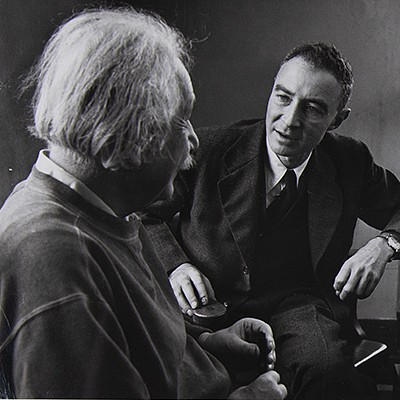Thomas Edison Document Signed for Light Bulb Patent: "Improvements in Carbon Burners for Incandescent Conductors for Electric Lamps"
Two ways to bid:
- Leave a max absentee bid and the platform will bid on your behalf up to your maximum bid during the live auction.
- Bid live during the auction and your bids will be submitted real-time to the auctioneer.
Bid Increments
| Price | Bid Increment |
|---|---|
| $0 | $5 |
| $50 | $10 |
| $200 | $25 |
| $500 | $50 |
About Auction
Dec 6, 2023
Boasting 500+ rare and remarkable lots, RR Auction's December Fine Autographs and Artifacts sale features special sections dedicated to World War II and Science & Technology. RR Auction support@rrauction.com
- Lot Description
Manuscript DS, signed "Thomas Alva Edison," one page both sides, 9 x 14, November 22, 1881. In full: "I, Thomas Alva Edison, of Menlo Park, in the state of New Jersey, United States of America, Electrician, do solemnly and sincerely declare, that I am in possession of an Invention for 'Improvements in Carbon Burners for Incandescent Conductors for Electric Lamps and in the means and methods of manufacture and treatment thereof partly applicable to the manufacture of other Carbon Articles,' British Patent dated February 9, 1881, No. 562, that I believe the said Invention will be of public utility; that I am the Inventor thereof, and that the same is not publicly known or used in India to the best of my knowledge and belief; and that to the best of my knowledge and belief my said invention is truly described in my petition for leave to file a specification thereof." Signed in black ink, "Thomas Alva Edison," and notarized beneath Edison's signature by George T. Pinckney on November 22, 1881.
The reverse of document bears a signed statement from William Simmons, written in another hand, stating, "I, William James Simmons, of Hastings Street in Calcutta a member of the firm Harris and Company, do solemnly and sincerely declare that the members of...Harris and Company have been justly and severally appointed by the said Thomas Alva Edison his agents for the purpose of obtaining an exclusive privilege for him under Act XV of 1859 of the Legislative Council of India in his invention above stated and I verily believe that the declaration of the said Thomas Alva Edison on the other side hereof written was signed by him and that the contents thereof are true. Dated at Calcutta this 31 day of January 1882." Affixed to the front of the document's bottom edge is a smaller one page document, 7.5 x 8, signed by Her Britannic Majesty's Consul-General, attesting to the signature of Pinckney, signed by E[dward] M[ortimer] Archibald. In very good to fine condition, with some light soiling and toning, and a diagonal cut across the bottom of the Archibald document.
Edison's genius extended to his business acumen, and a number of his patents were first obtained overseas to ensure international ownership. Like most inventions, Edison's famed development of the incandescent electric light built upon the work of predecessors. The first electric light was made in 1800 by Humphry Davy, an English scientist who experimented with electricity and invented an electric battery. When he connected wires to his battery and a piece of carbon, the carbon glowed, producing light. This is called an electric arc.
Much later, in 1860, the English physicist Sir Joseph Wilson Swan (1828-1914) was determined to devise a more practical, long-lasting electric light. He found that a carbon paper filament worked well, but burned up quickly. In 1878, he demonstrated his new electric lamps in Newcastle, England.
In 1877, American Charles Francis Brush manufactured some carbon arcs to light a public square in Cleveland, Ohio, USA. These arcs were used on a few streets, in a few large office buildings, and even some stores. But all these electric lights were used by only a few people and were not widely accepted.
Finally, the great inventor Thomas Alva Edison, who experimented with thousands of different filaments, found just the right materials to glow well while being long-lasting and affordable. In 1879, Edison discovered that a carbon filament in an oxygen-free bulb glowed but did not burn up for 40 hours. By making various adjustments, Edison eventually produced a bulb that could glow for over 1500 hours. Lewis Howard Latimer (1848-1928), an African-American member of Edison's research team, continued making improvements to the bulb and the new "carbon burner" was patented in February 1881 in England, and then in other countries in the following months. This remarkable document pertains to the extension of the patent into India, then still part of the British Empire. A rare, early Edison document related to his greatest invention—the incandescent light—boasting his uncommon full signature. - Shipping Info
-
Bidder is liable for shipping and handling and providing accurate information as to shipping or delivery locations and arranging for such. RR Auction is unable to combine purchases from other auctions or affiliates into one package for shipping purposes. Lots won will be shipped in a commercially reasonable time after payment in good funds for the merchandise and the shipping fees are received or credit extended, except when third-party shipment occurs. Bidder agrees that service and handling charges related to shipping items which are not pre-paid may be charged to a credit card on file with RR Auction. Successful international Bidders shall provide written shipping instructions, including specified Customs declarations, to RR Auction for any lots to be delivered outside of the United States. NOTE: Declaration value shall be the item’(s) hammer price and RR Auction shall use the correct harmonized code for the lot. Domestic Bidders on lots designated for third-party shipment must designate the common carrier, accept risk of loss, and prepay shipping costs.
-
- Buyer's Premium



 EUR
EUR CAD
CAD AUD
AUD GBP
GBP MXN
MXN HKD
HKD CNY
CNY MYR
MYR SEK
SEK SGD
SGD CHF
CHF THB
THB














